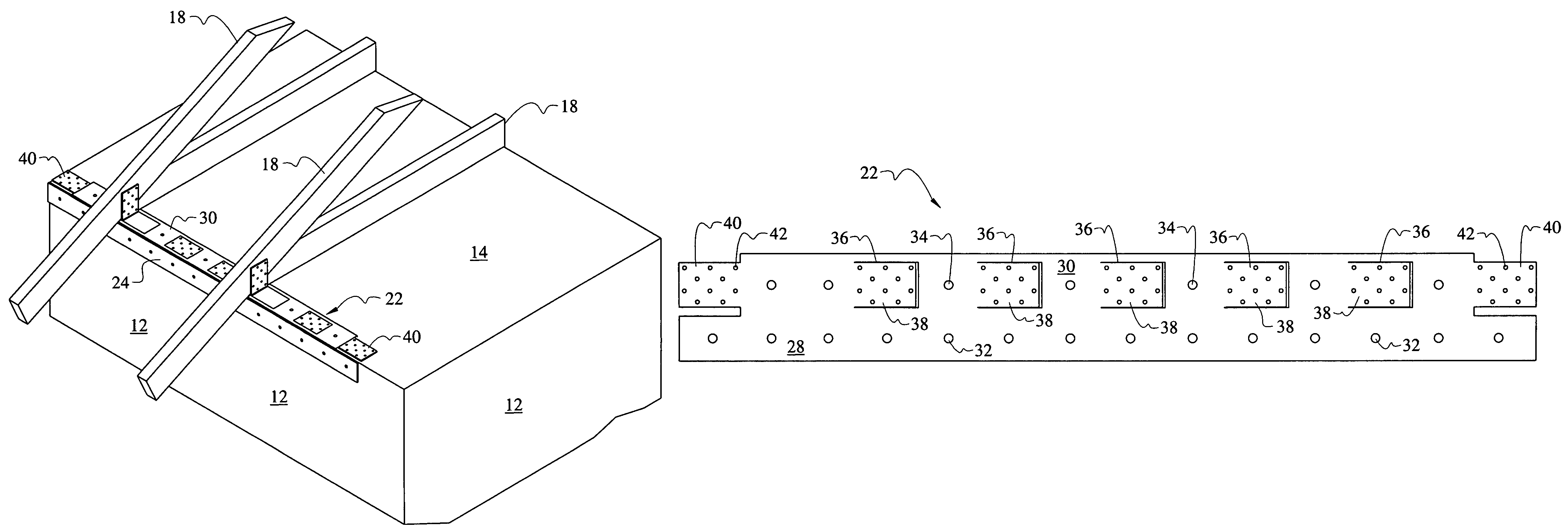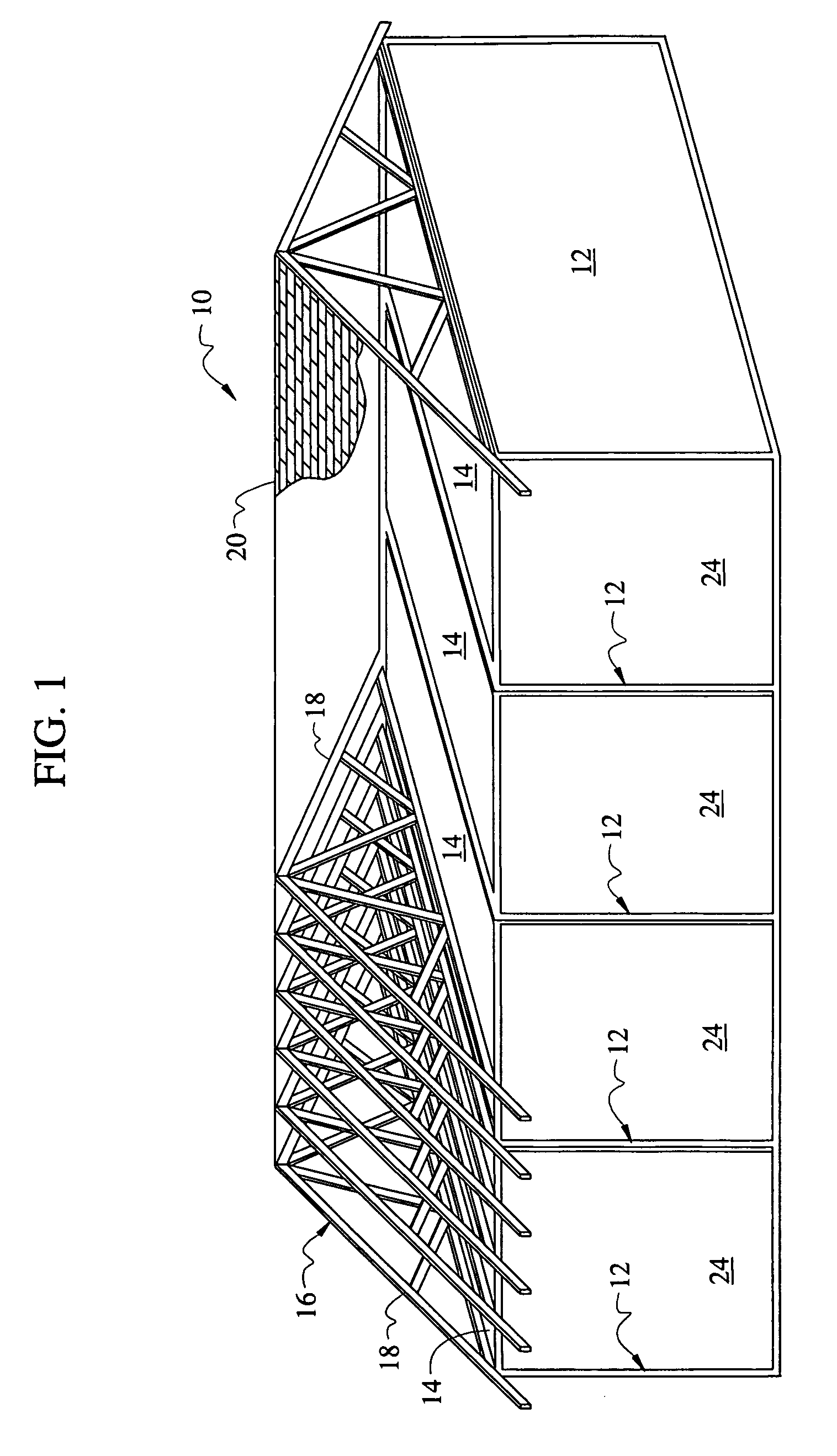Truss bracket for shipping container construction
a technology for shipping containers and brackets, applied in the field of construction methods, can solve the problems of difficult re-use, large size of the brackets to drop off at a re, and high cost of reducing the size of the brackets
- Summary
- Abstract
- Description
- Claims
- Application Information
AI Technical Summary
Benefits of technology
Problems solved by technology
Method used
Image
Examples
Embodiment Construction
[0026]Referring now to FIG. 1, it will there be seen that a house or other occupied or unoccupied building 10 is constructed in part by welding together a plurality of shipping containers, collectively denoted 12, in side-by-side relation to one another. In this particular example, four containers are used in a single story design but differing numbers of containers may be used and the designs may include multiple stories.
[0027]Each container 12 includes its own top wall 14 so no roof construction is needed for house 10. However, to increase the aesthetic appeal of the house, and to disguise the fact that it is made from containers, it is advantageous to add a conventional rood construction thereto. The roof construction is denoted 16 as a whole and includes a plurality of trusses, collectively denoted 18, ridge 20, and other conventional parts that are not numbered because they are well known and are not a part of the invention, per se.
[0028]The novel bracket of this invention is d...
PUM
 Login to View More
Login to View More Abstract
Description
Claims
Application Information
 Login to View More
Login to View More - R&D
- Intellectual Property
- Life Sciences
- Materials
- Tech Scout
- Unparalleled Data Quality
- Higher Quality Content
- 60% Fewer Hallucinations
Browse by: Latest US Patents, China's latest patents, Technical Efficacy Thesaurus, Application Domain, Technology Topic, Popular Technical Reports.
© 2025 PatSnap. All rights reserved.Legal|Privacy policy|Modern Slavery Act Transparency Statement|Sitemap|About US| Contact US: help@patsnap.com



